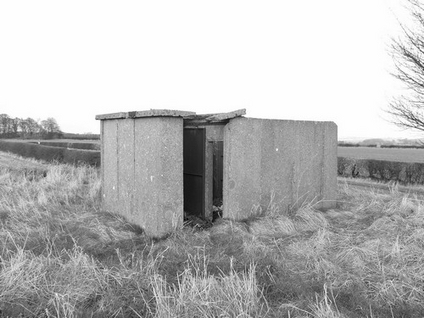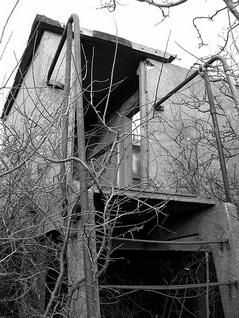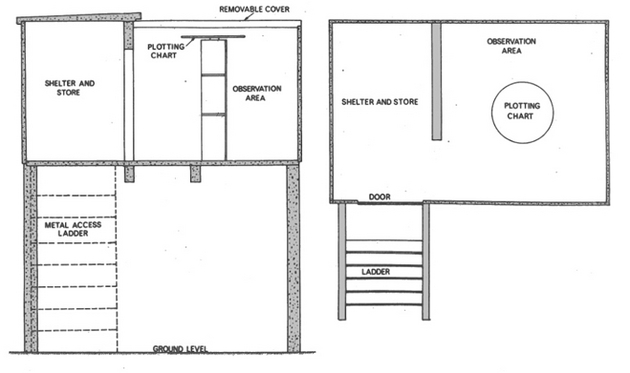POST-WAR OBSERVATION POSTS
Experience from during WW2 identified that there would be a need for increased protection from enemy aircraft if the UK was ever faced at being at war again. Although the ROC was finding that aircraft monitoring was becoming increasingly difficult to plot with the development of new faster aircraft; new aircraft monitoring posts were developed to assist observers to monitor aircraft.
The idea for these new posts originated in 1947, however it was only during 1951/52 as part of the programme to update the air defences through the 'Rotor Plan' that more substantial buildings were built to offer at least some level of protection from the elements or attack. Although some of these new structures were built of brick; many sites received pre-cast concrete panelled structures known as“Orlit” posts, after the manufacturers of the structures Messrs Orlit Ltd.
These Orlit structures were split into two sections, the entrance door led into the smaller roofed section which was used as a shelter and store with a sliding door into the open section which housed the post instrument and chart on top of a wooden mounting. Two types of Orlit posts existed; the Orlit ‘A’ was at ground level and the Orlit ‘B’ was raised on four 6’0" legs with a ladder for access.
The idea for these new posts originated in 1947, however it was only during 1951/52 as part of the programme to update the air defences through the 'Rotor Plan' that more substantial buildings were built to offer at least some level of protection from the elements or attack. Although some of these new structures were built of brick; many sites received pre-cast concrete panelled structures known as“Orlit” posts, after the manufacturers of the structures Messrs Orlit Ltd.
These Orlit structures were split into two sections, the entrance door led into the smaller roofed section which was used as a shelter and store with a sliding door into the open section which housed the post instrument and chart on top of a wooden mounting. Two types of Orlit posts existed; the Orlit ‘A’ was at ground level and the Orlit ‘B’ was raised on four 6’0" legs with a ladder for access.
Plan of ROC Overground“Orlit B” Post. The “Orlit A” post was of a similar construction except it was not raised above the ground.
Image Sources & Copyright:
Top - Noel Ryan c/o Airfield Information Exchange (AiX)
Bottom - Wood, D.: Attack Warning Red – 1976 Edition
Top - Noel Ryan c/o Airfield Information Exchange (AiX)
Bottom - Wood, D.: Attack Warning Red – 1976 Edition


